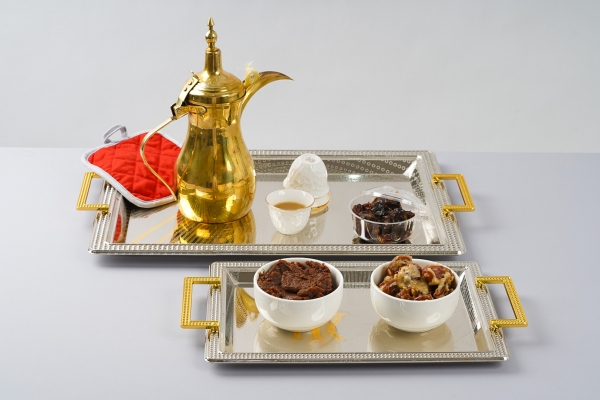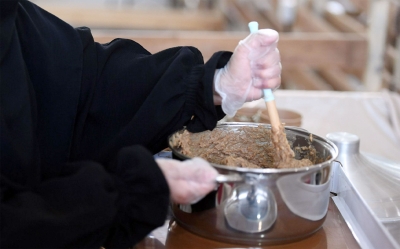
Qishd is one of the popular desserts known in most provinces of the Kingdom of Saudi Arabia. It is prepared using millet flour, wheat flour, or barley grain. Like most Saudi popular dishes, specifically, those originating from the provinces of Riyadh, Qassim, and Makkah al-Mukarramah, dates and millet flour are the main ingredients of Qishd, which is frequently served for breakfast or dinner.
How to prepare Qishd
Riyadh and Qassim share many dishes with a heavy consistency, including Hanini, Harees, Thareed with cardamom, and Qishd. In some places, however, such as in Wadi Al-Dawasir, Qishd is known as al-Abeet. The name reflects Qishd's texture when uncooked. In other provinces, flour is manually kneaded with ghee or butter to take on a more solid shape, similar to traditional dough. It is then served with cream or cardamom. In other regions, it is cooked over a fire to give it a thicker texture to be served with almonds and walnuts.
Qishd in Saudi culture
Qishd is similar to several traditional dishes in most of the Kingdom's provinces, such as Sheeatha, specifically in provinces whose dishes include dates, such as Wadi al-Dawasir Governorate. As home to the world's largest date palm plantation, Qassim is known for multiple varieties of dishes, all made with dates, such as Hanini and date molasses in Kleicha, a dish that Qassim provides locally and regionally. Qishd appears at the top of these dishes.
Qishd serving season
Qishd is frequently cooked and served in the winter, and during Ramadan. It can be categorized as a heavy winter food. It has a texture similar to Aseeda, which is rich with calories that provide energy and warmth. Nevertheless, Qishd is eaten all year round in several Saudi provinces. Different types of flour are used across the Kingdom for the preparation of Qishd. Some provinces use whole wheat flour, while others use millet or barley.
Preparation time
Less than an hour is enough to prepare Qishd and to give it a more solid texture, similar to Aseeda or Talbeenah. It is served or stored in containers to prevent cold leakage. Ghee, almonds, cardamom, and ground pistachios can be added to Qishd before it is served.
Qishd in events and occasions
As a traditional dish, Qishd is served with Iftar during Ramadan festivals, the early days of Eid, and festivals of productive families. Qish prepared during festivals in general and heritage events in particular, such as the Janadriyah National Festival of Heritage and Culture. Qishd is offered alongside other Saudi dishes, such as Aseeda, Hanini, and Talbeenah.
Related quizzes


